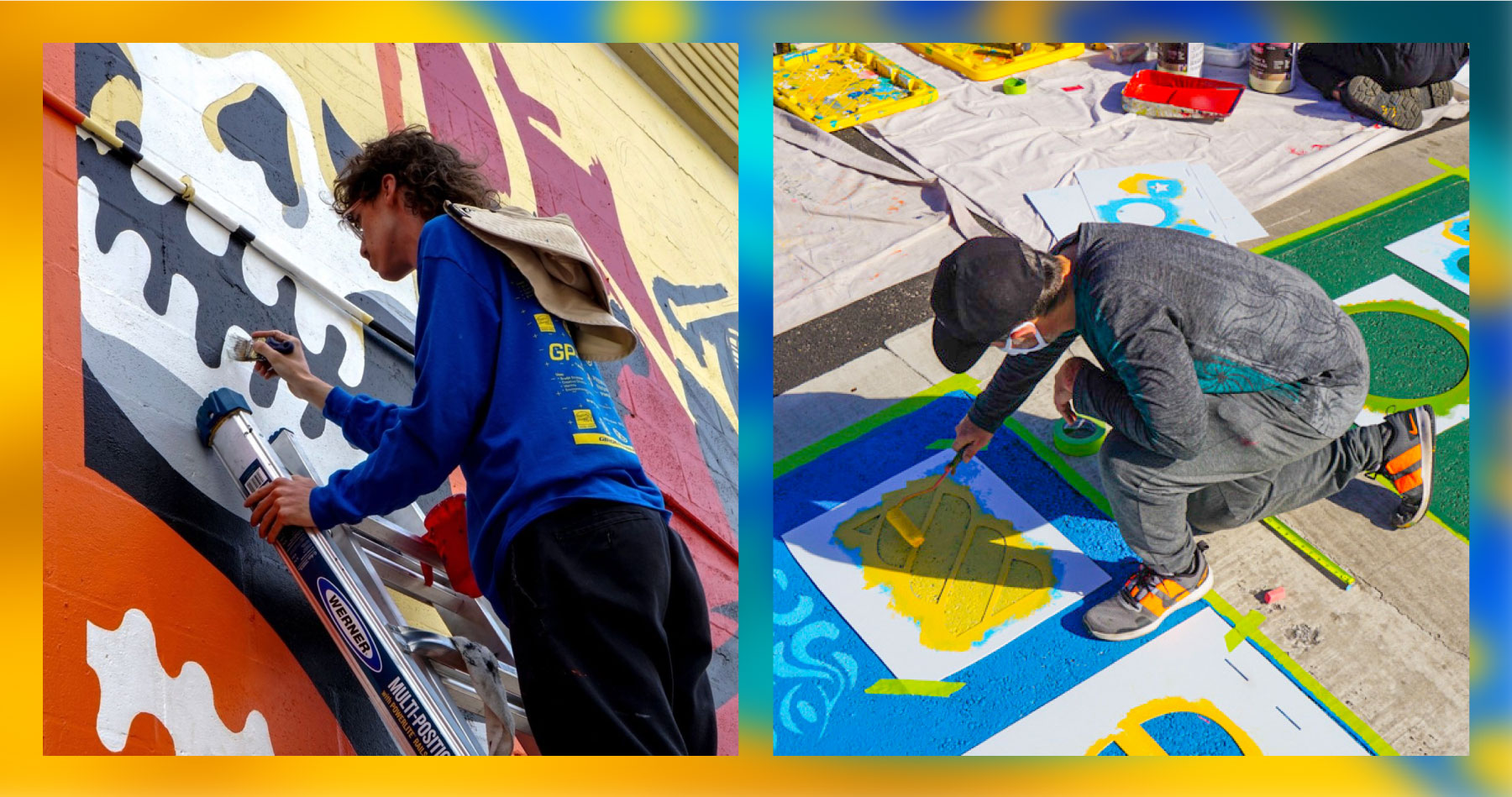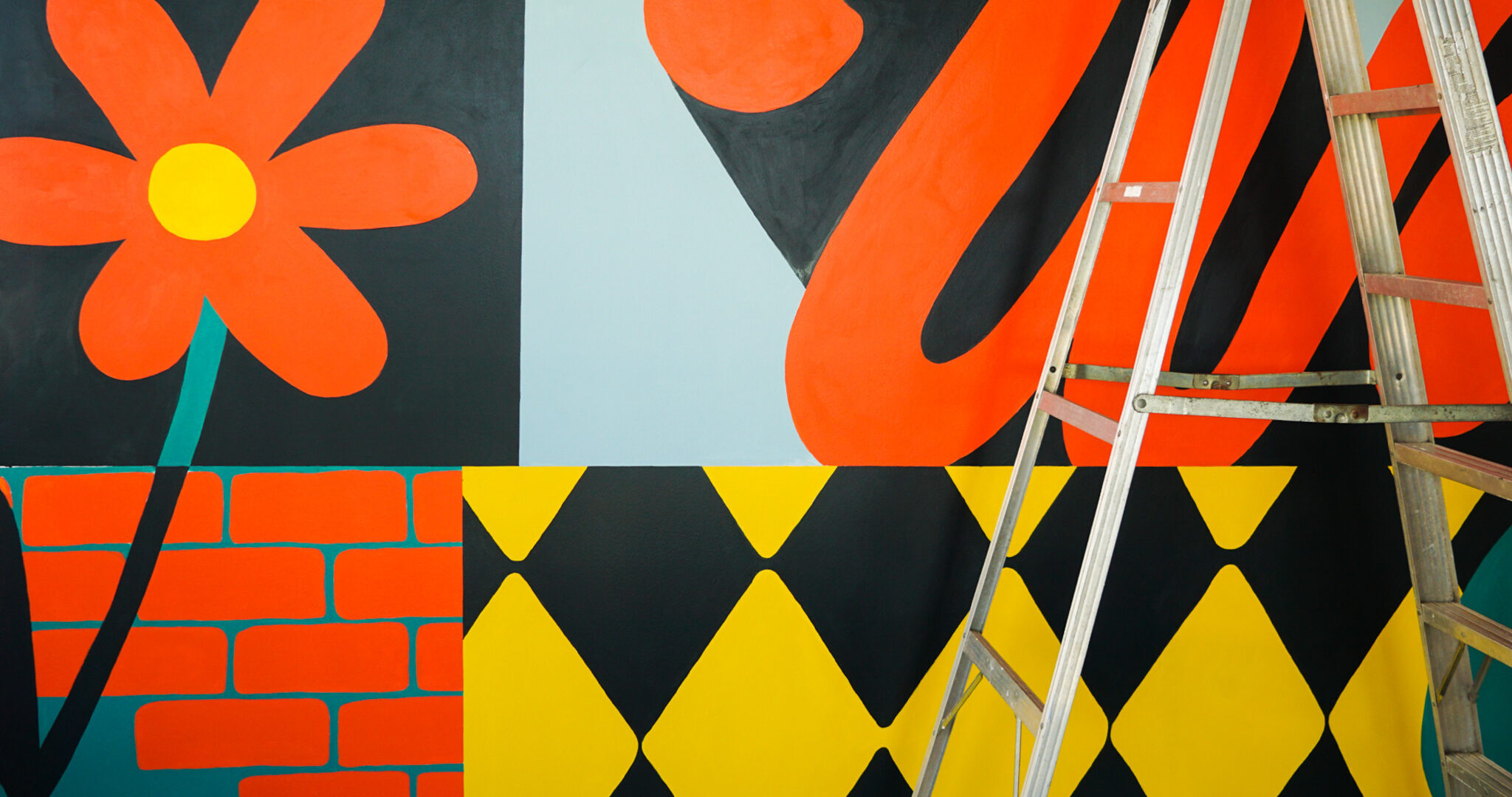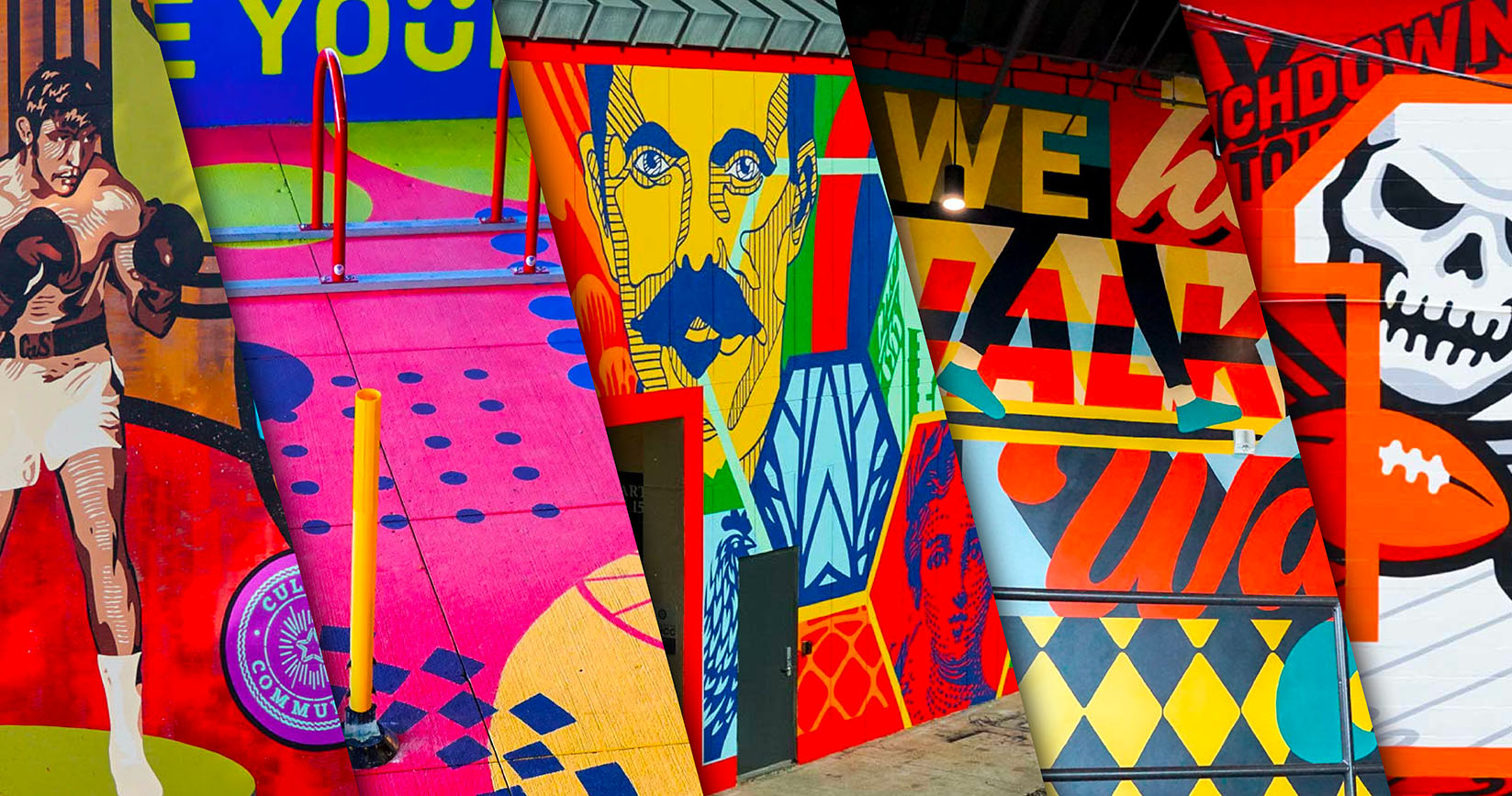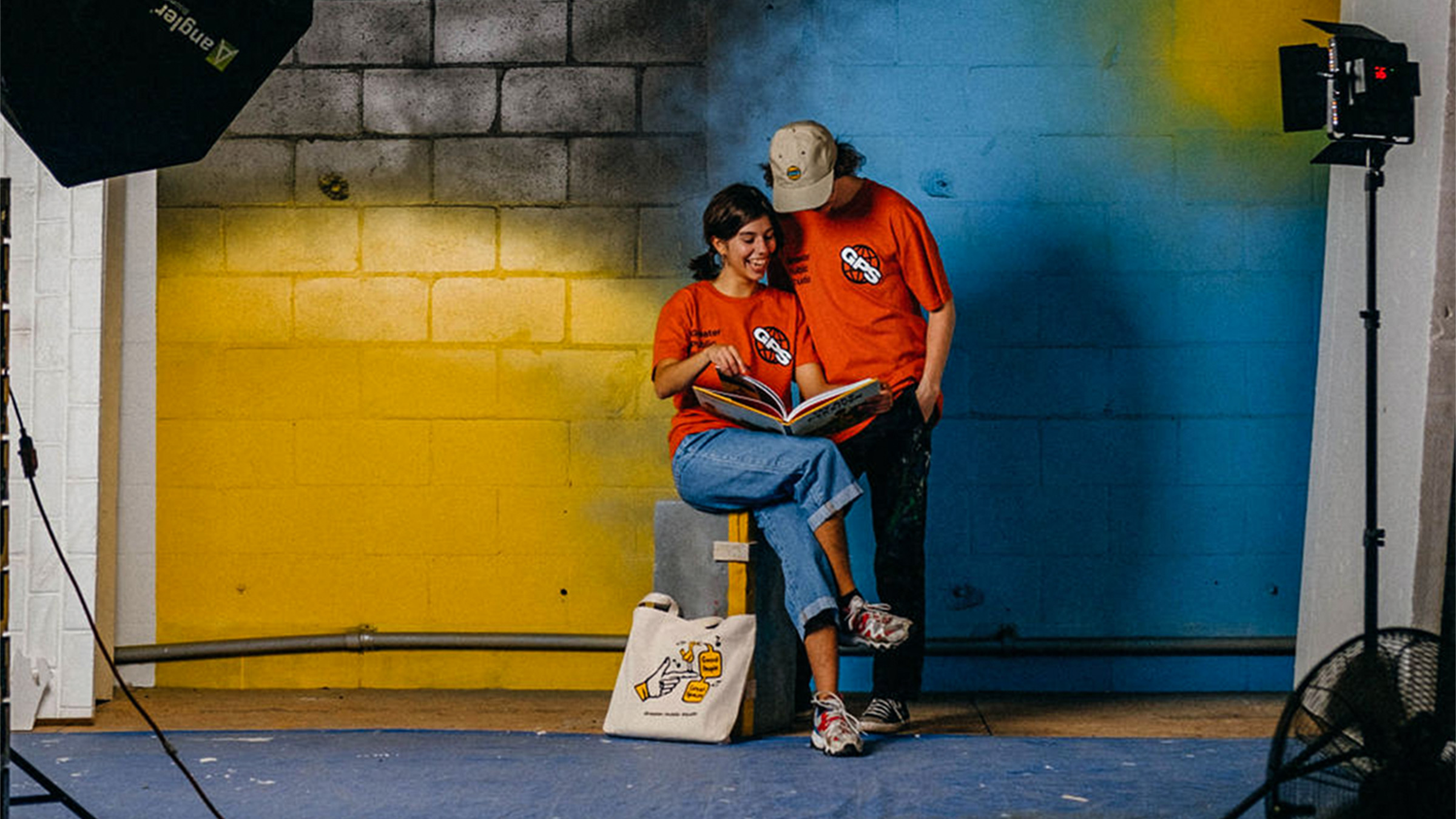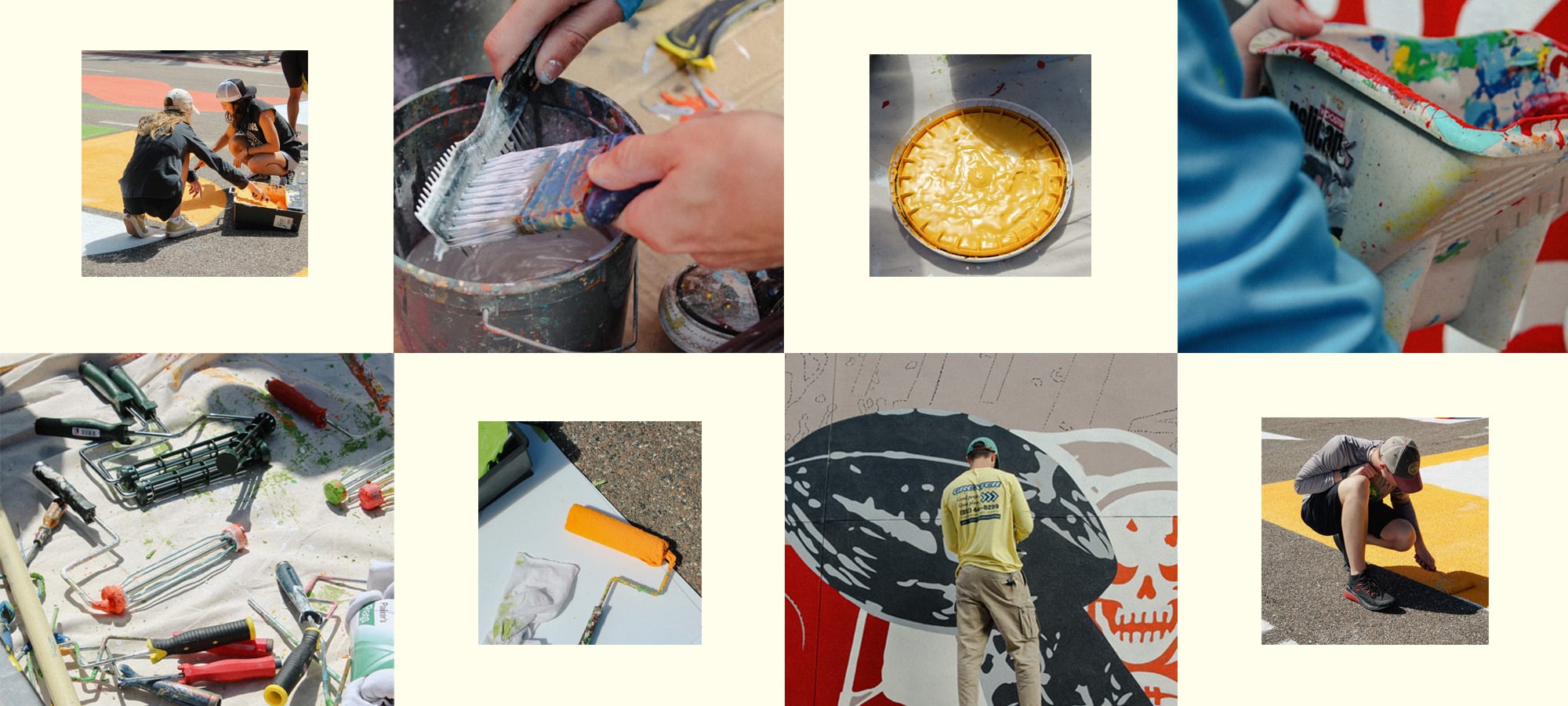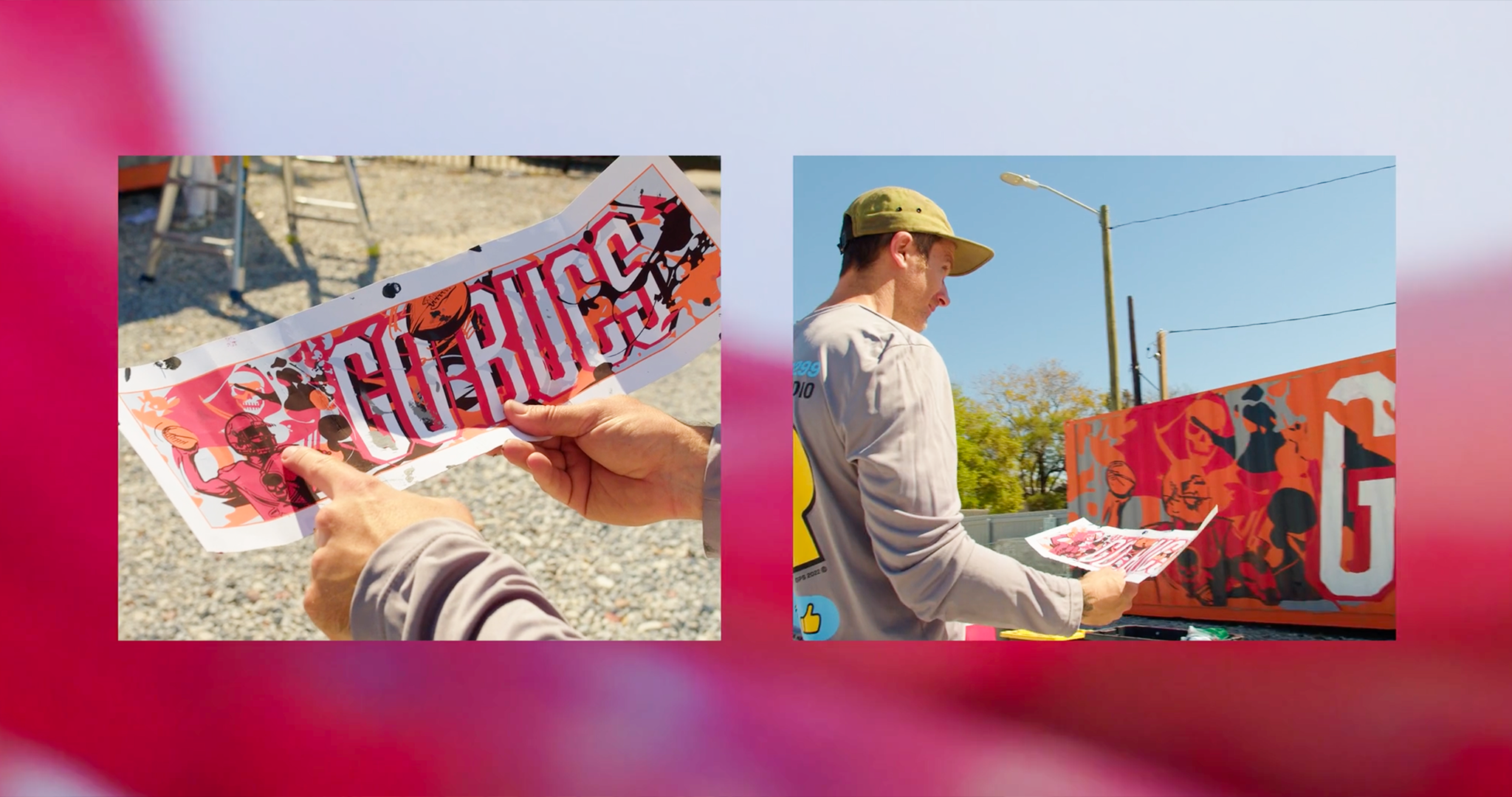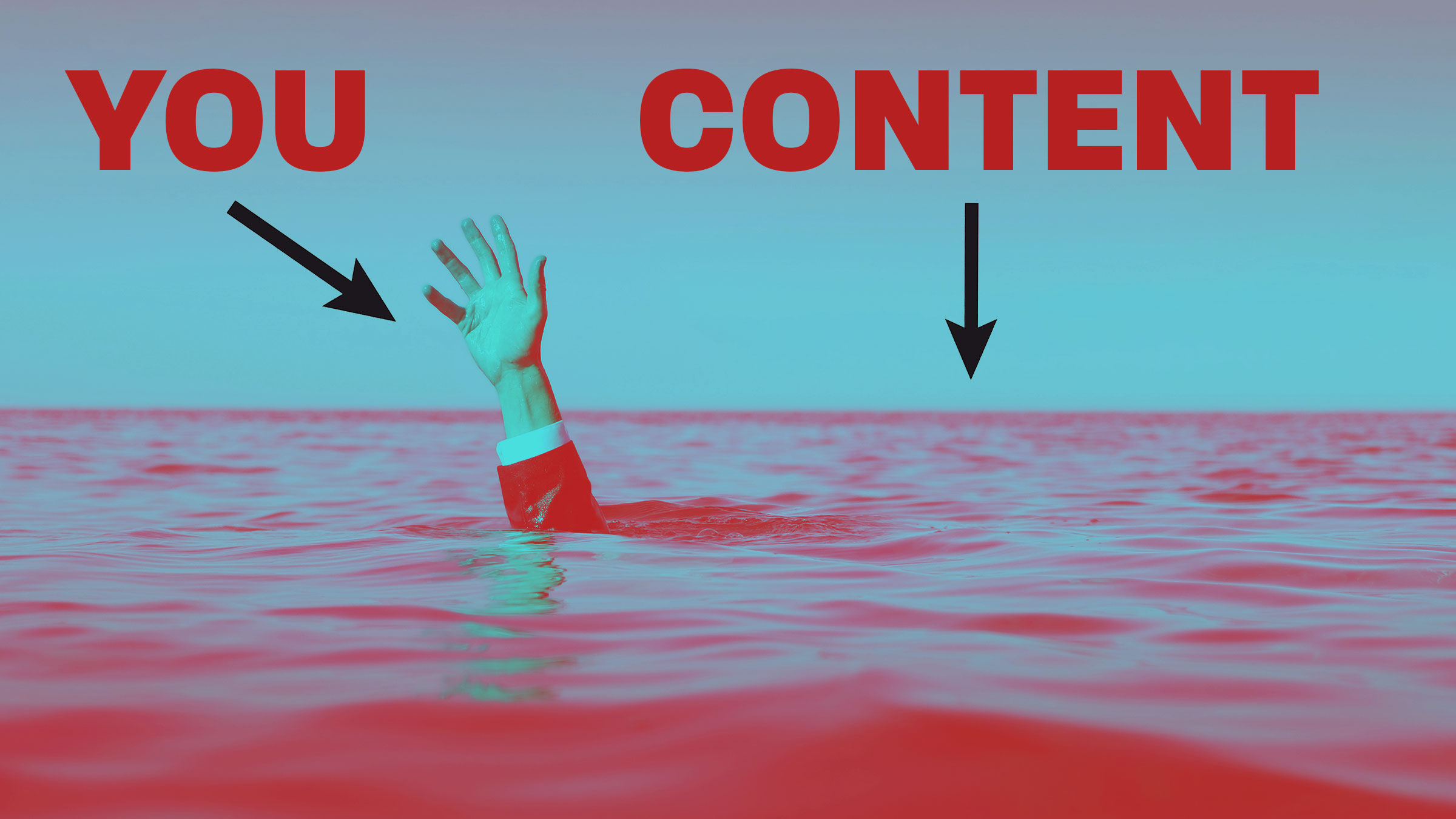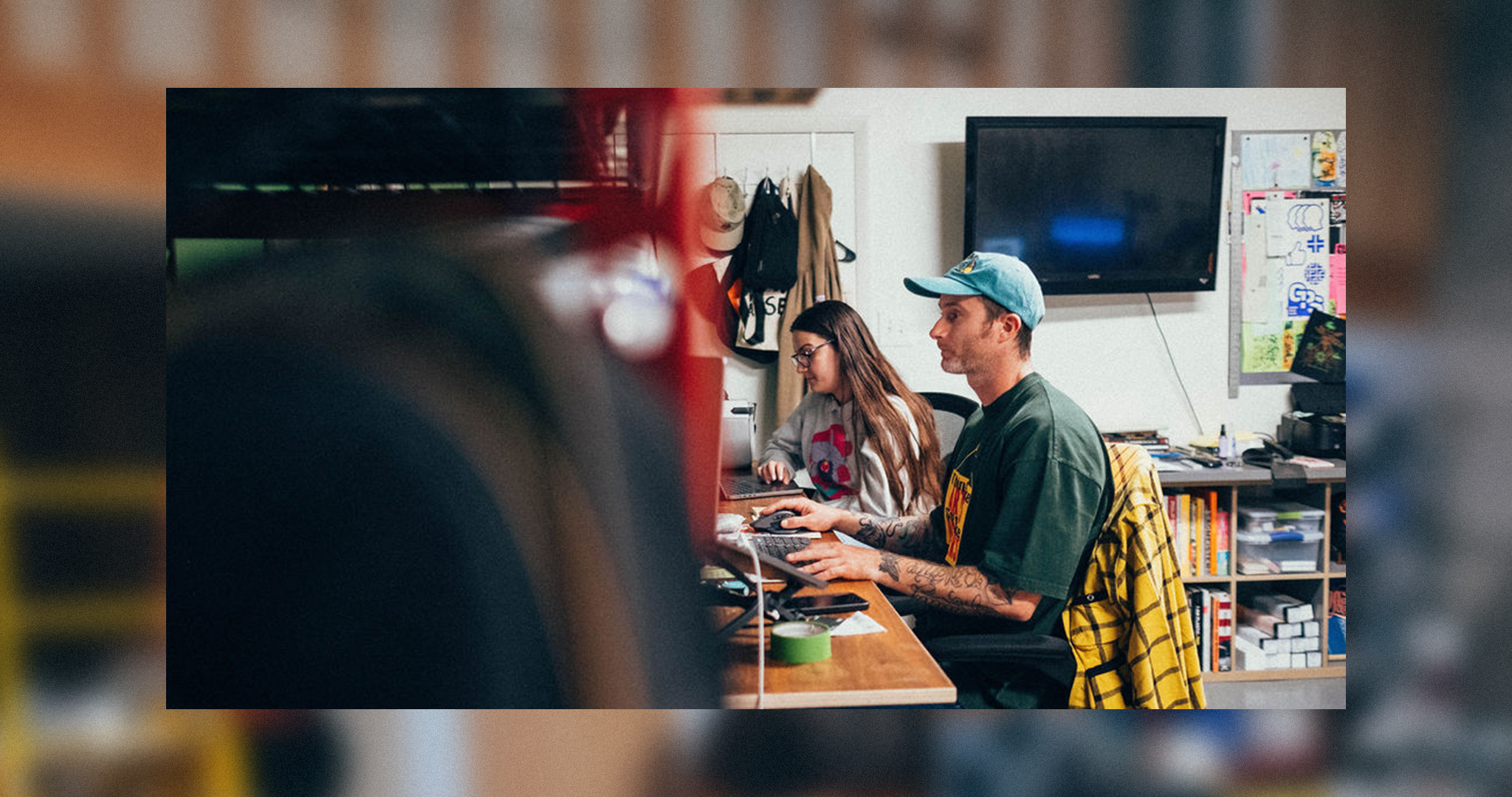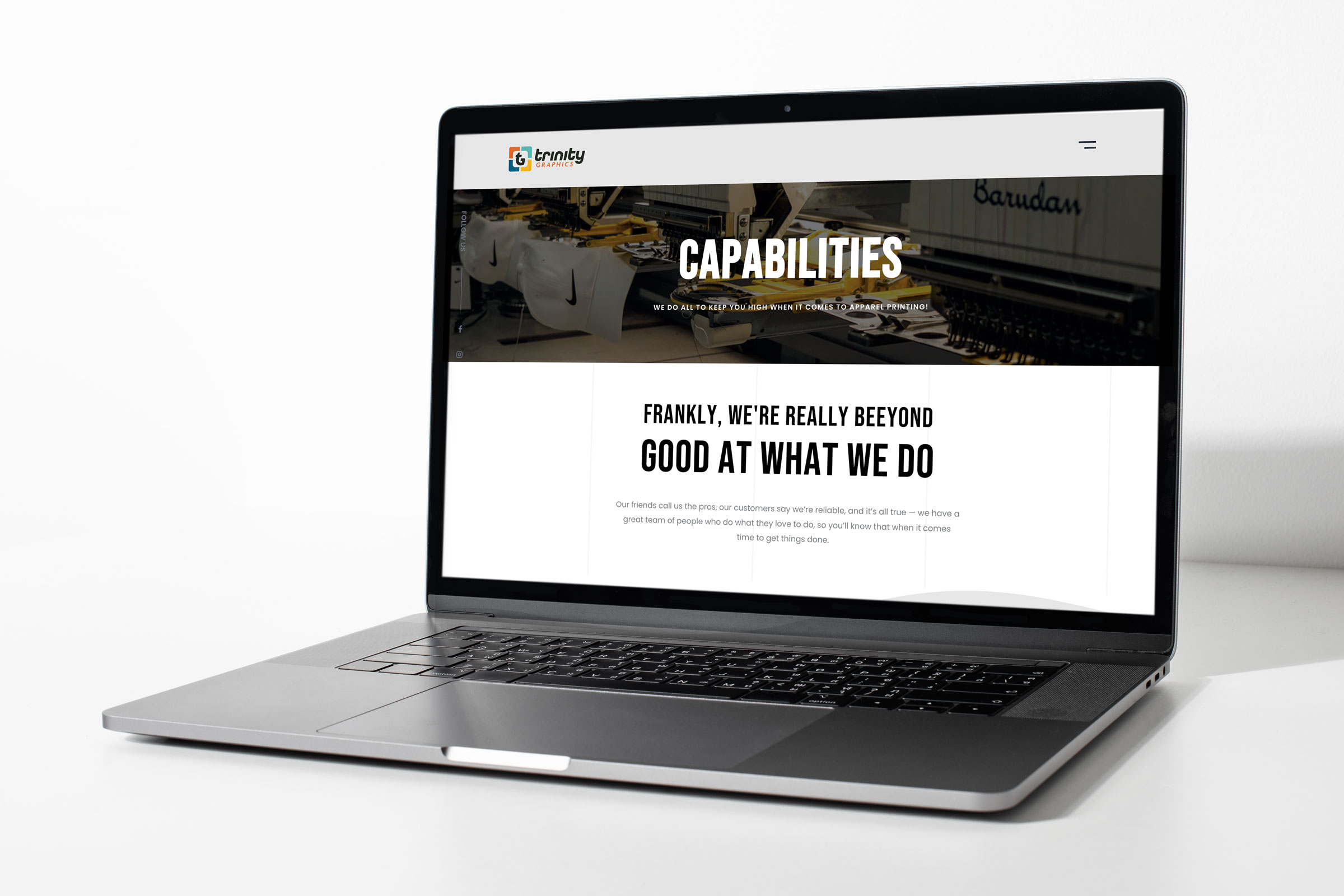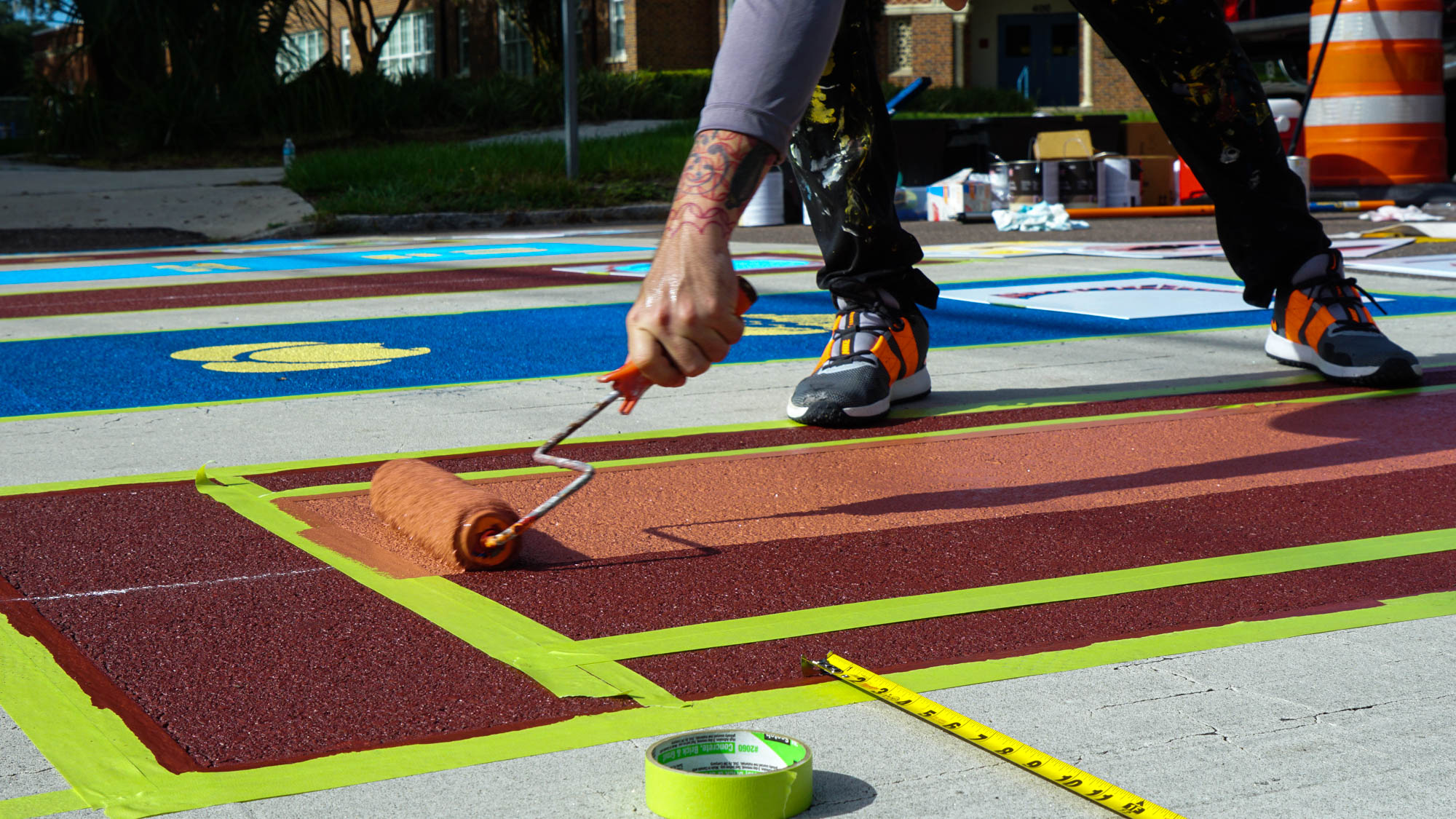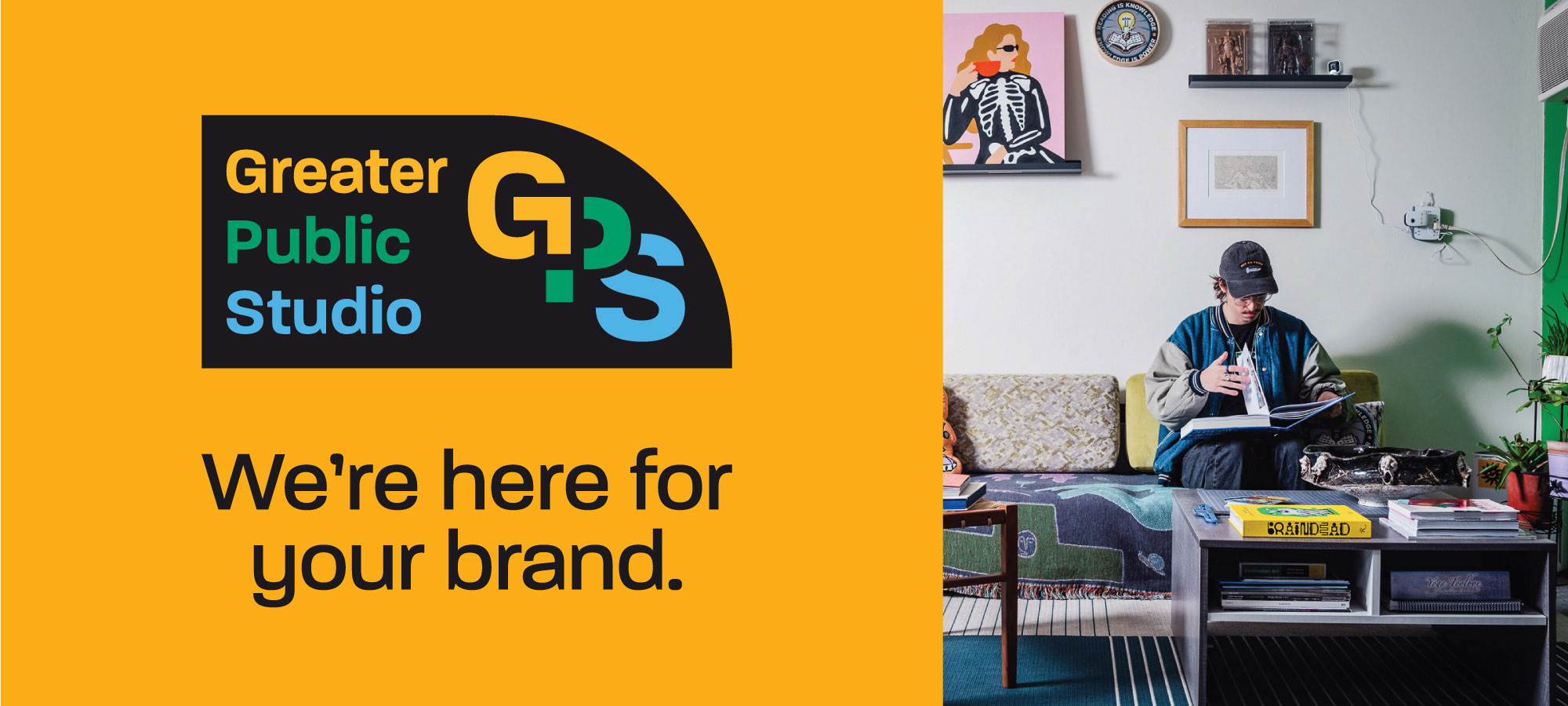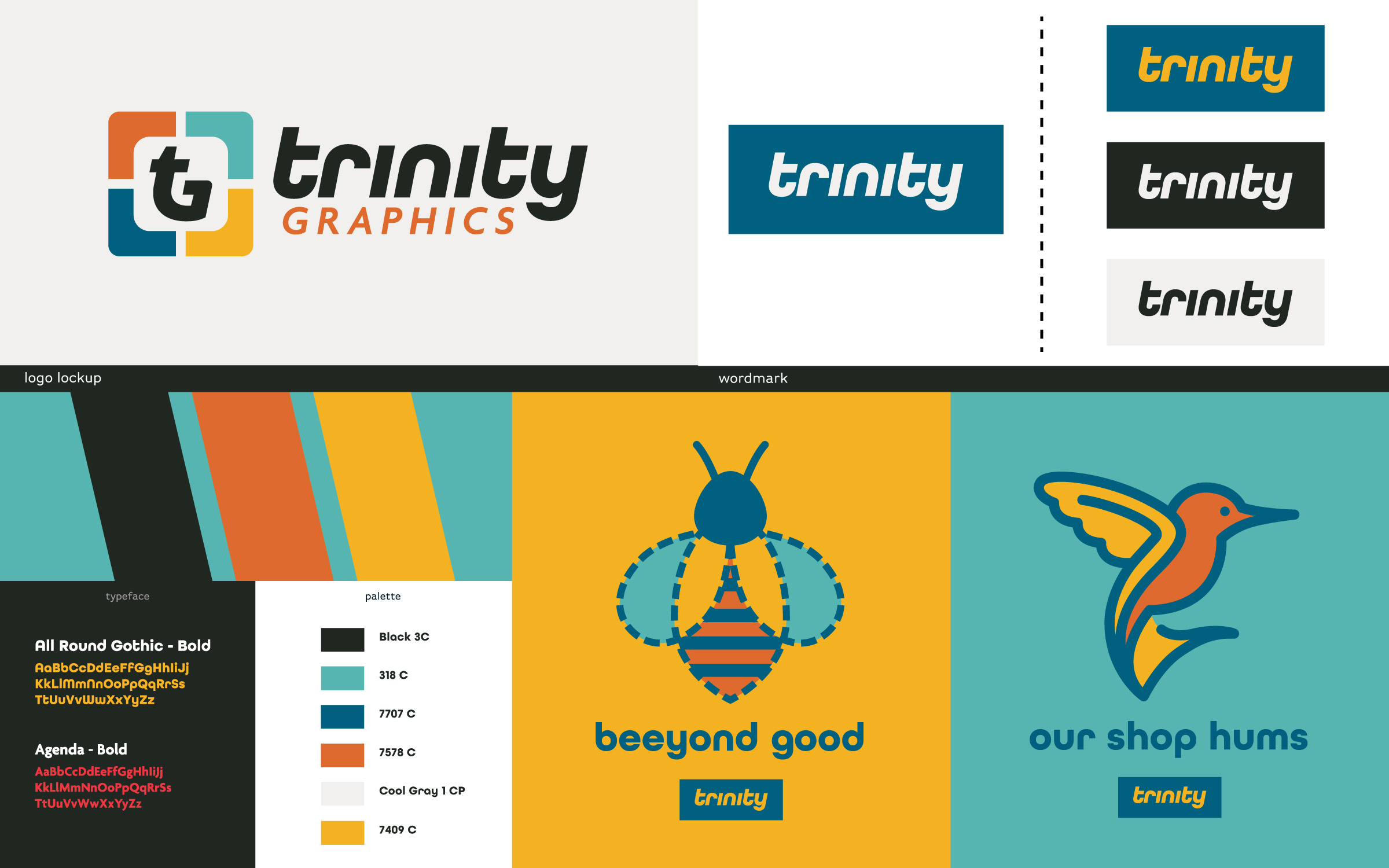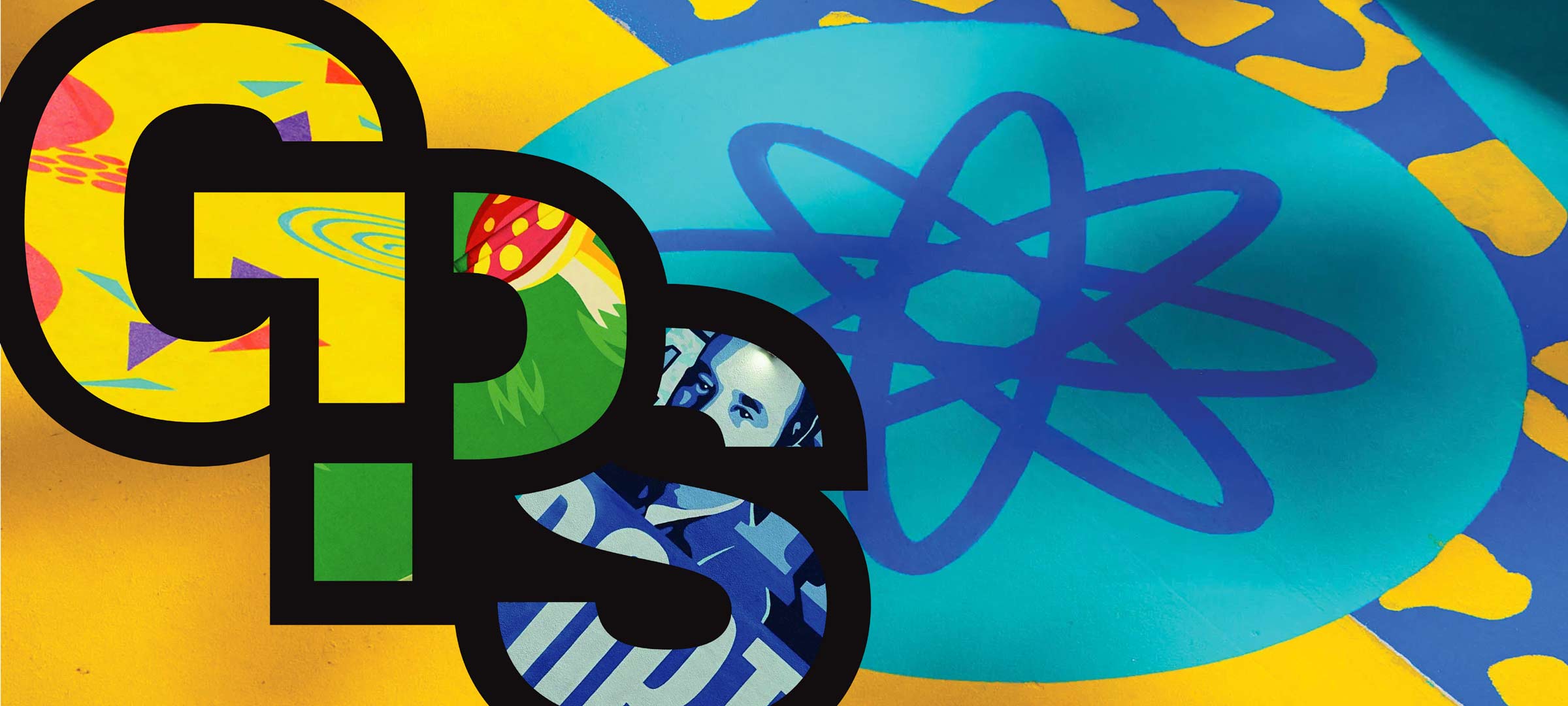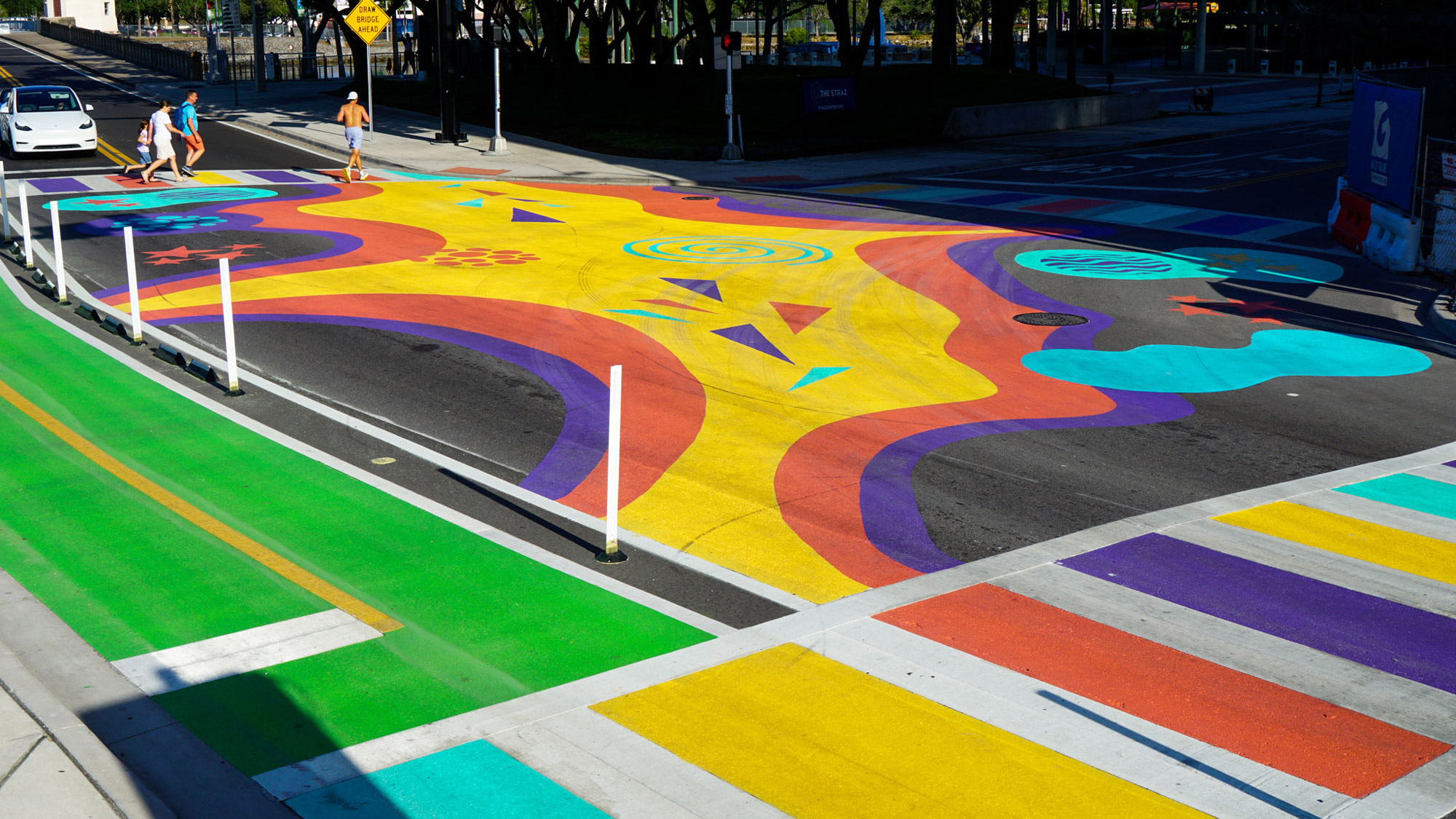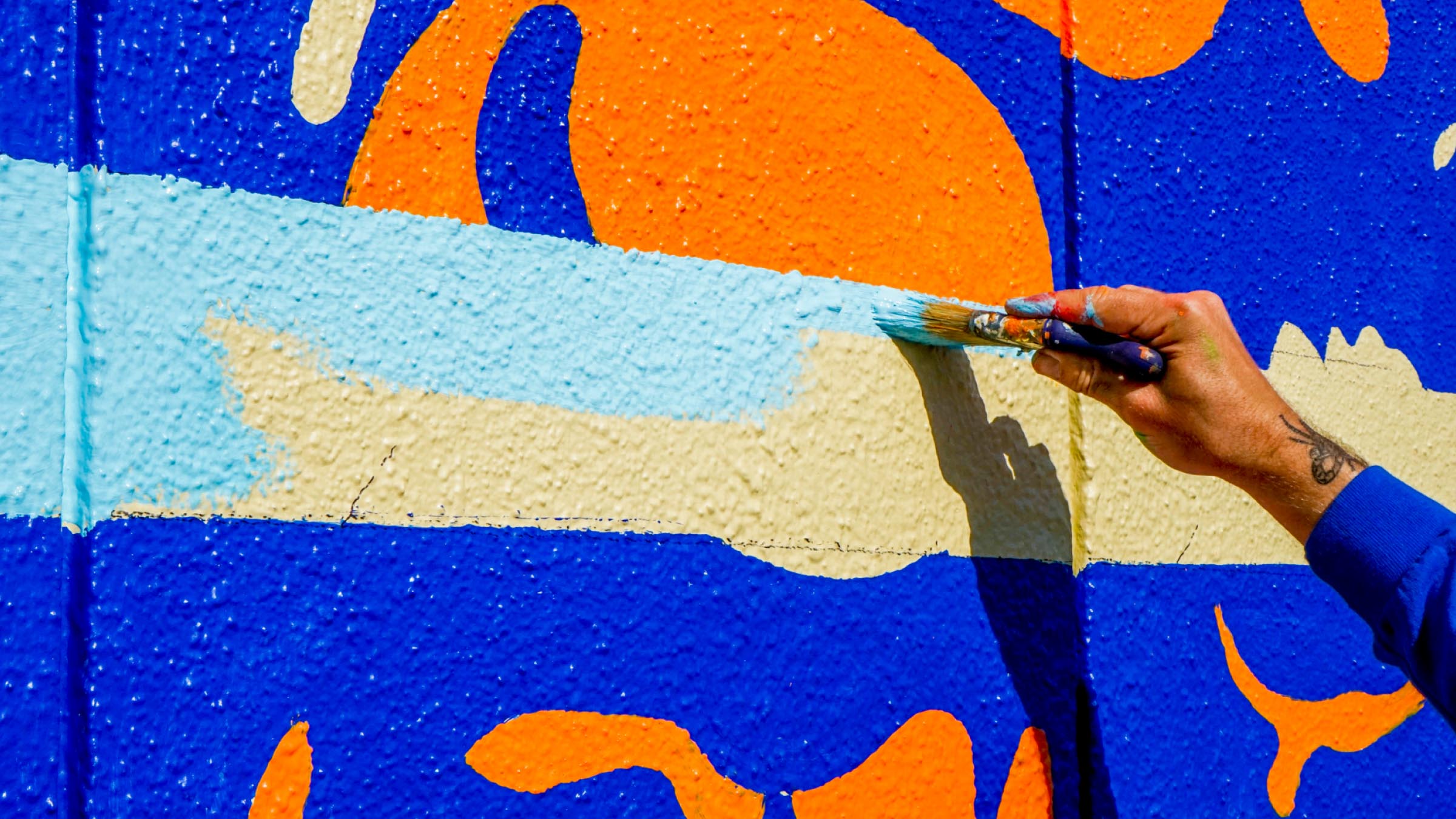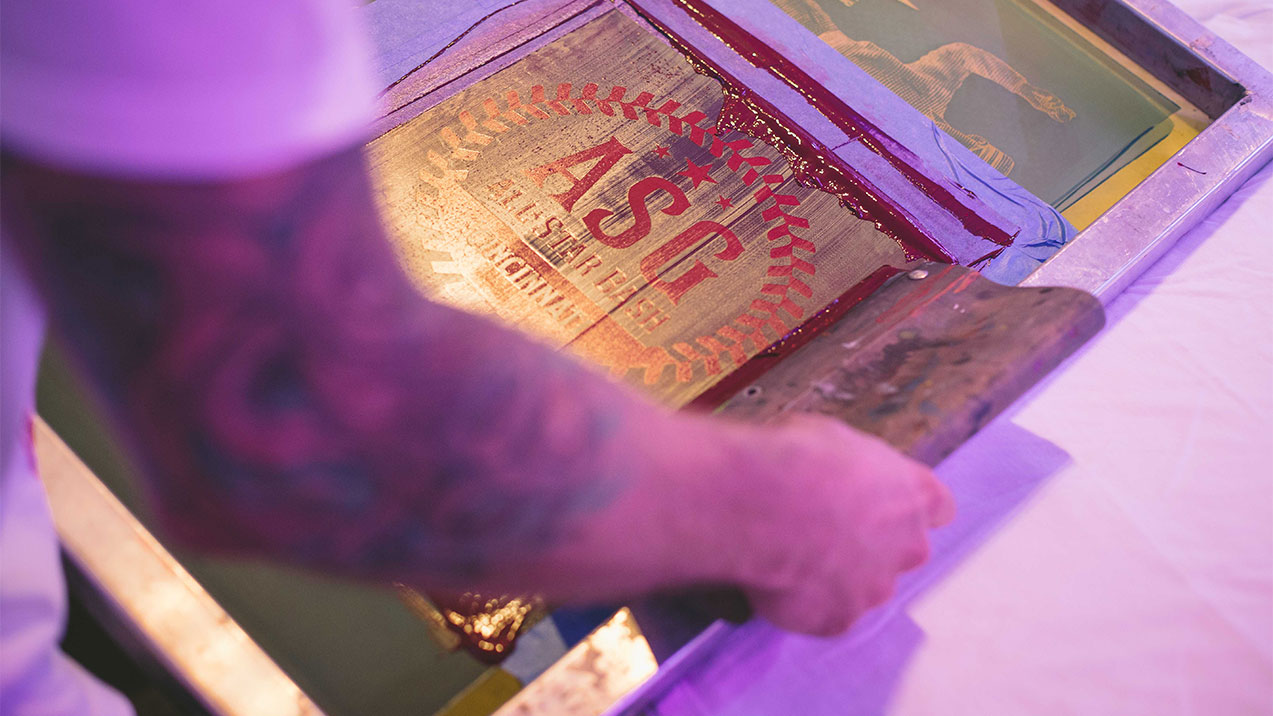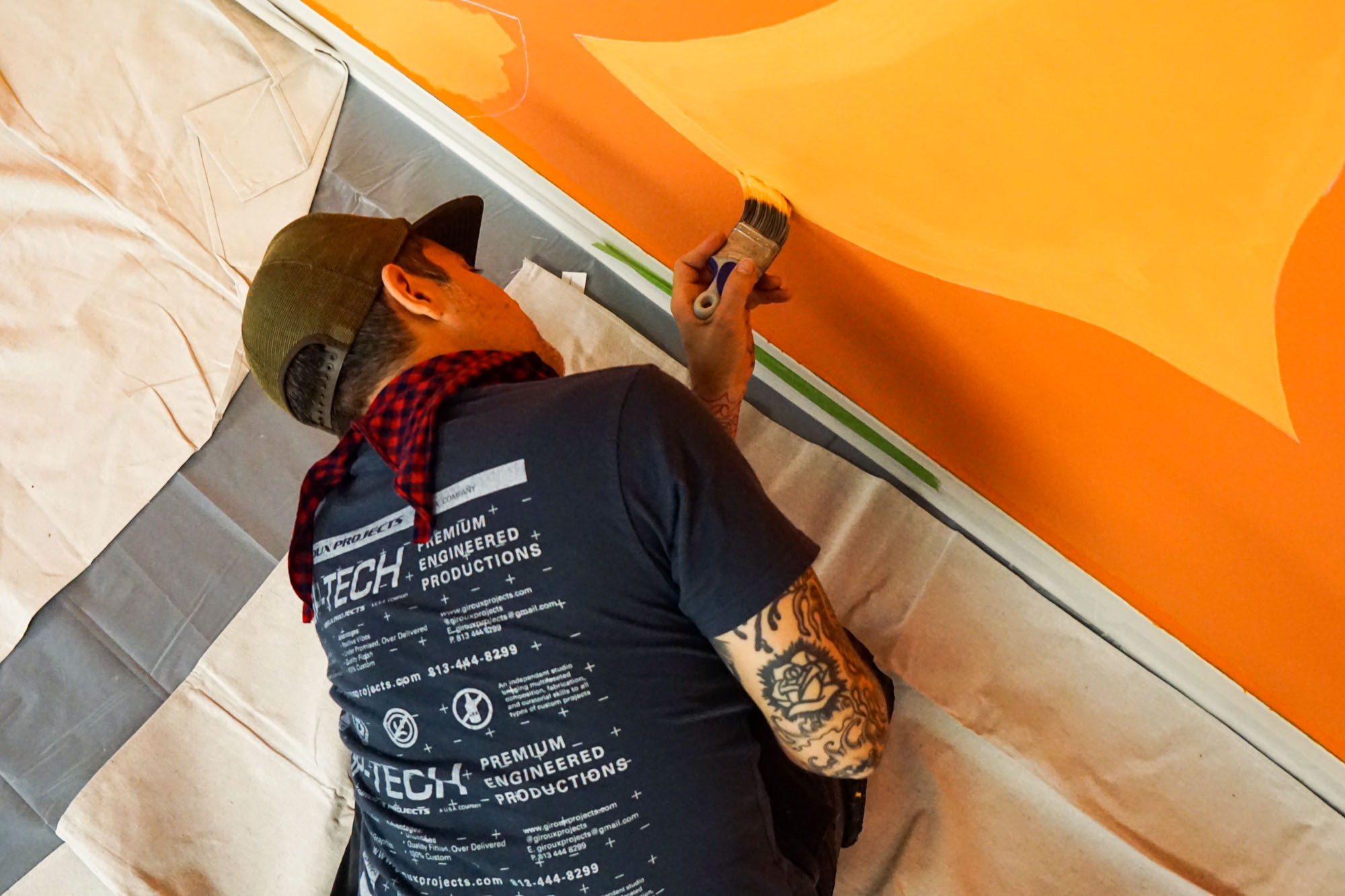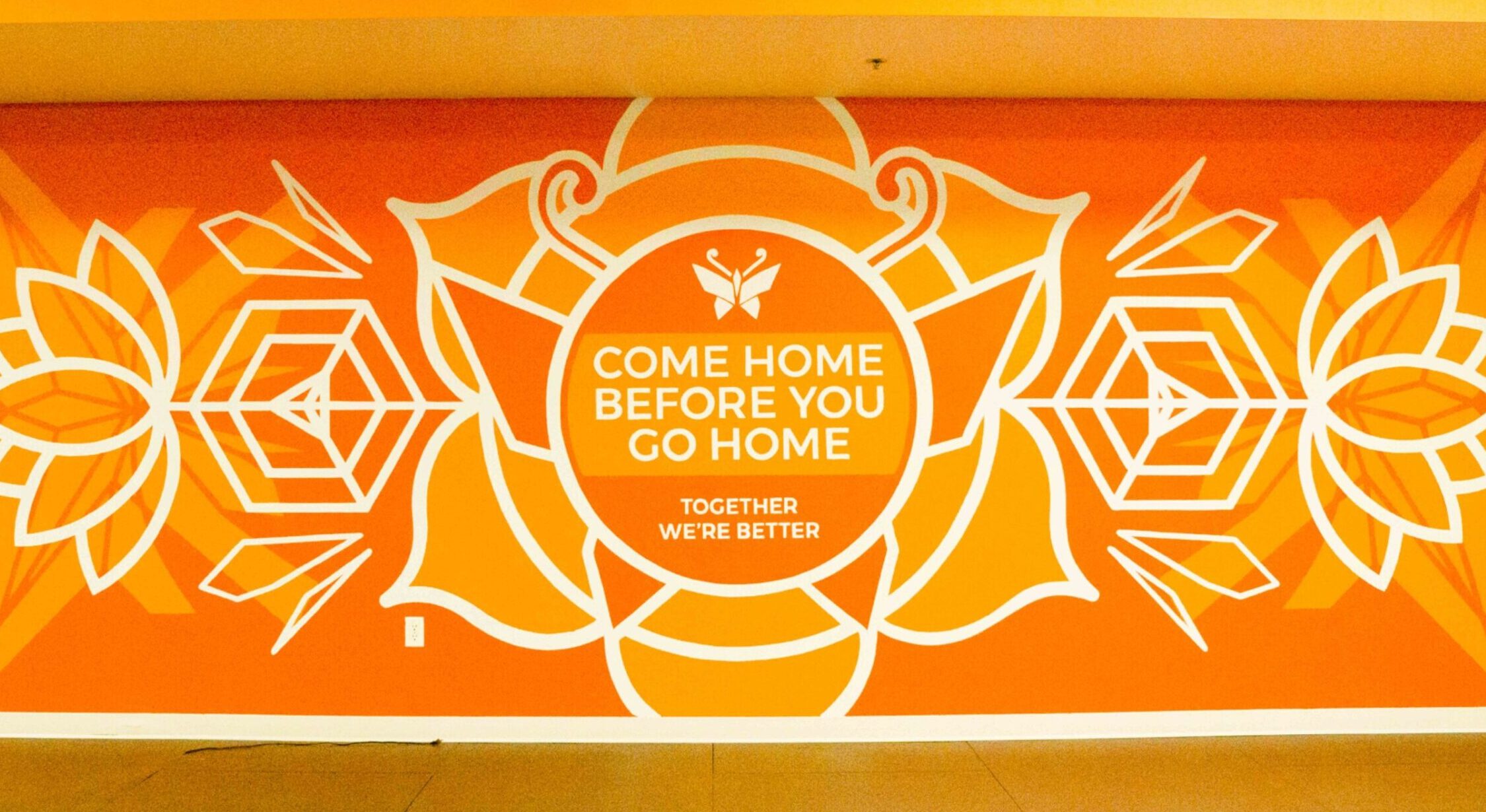
Mindfulness and Art
Greater Public Studio was commissioned to provide creative direction, design and installation at Kodawari Studios, a Yoga, Bodywork and Wellness Center located in South Tampa. A hand-painted interior mural with the invitation to “come home before you go home” was added to the studio, which elicits a thoughtful conversation about the connection between mindfulness, wellness, and the creative process.
The Oxford Languages dictionary defines mindfulness as a mental state achieved by focusing one’s awareness on the present moment, while calmly acknowledging and accepting one’s feelings, thoughts, and bodily sensations. Mindfulness is sometimes combined with a yogic practice, further aligning the mind and body. But it can also be applied to a wide swath of daily practices or as a general way of approaching life; being conscious or aware of things outside of ourselves. Dissecting that idea further, it’s important to note that mindfulness is not only about awareness, but also acceptance of the thoughts, feelings and sensations that arise, creating within ourselves a judgement free zone.
For many artists, developing a creative practice that is centered around acceptance can be an integral step toward producing work—particularly if the artist is creating a new body of work. Mihaly Csikszentmihalyi, a Hungarian American psychologist, commonly associated with positive psychology, introduced the concept of “flow,” which describes those moments of complete absorption we experience while engaged in a challenging task. Flow is often associated with the creative process. Artists describe being “in the zone” as work pours out of them smoothly and without regard to time. Csikszentmihalyi explains that the flow state occurs when one is engaged in a task that is challenging yet on par with one’s skill level—that sweet spot that requires enough concentration (mindfulness) without being irritatingly difficult or mind-numbingly easy. He argues that people are at their most happy and most productive while in a state of flow.
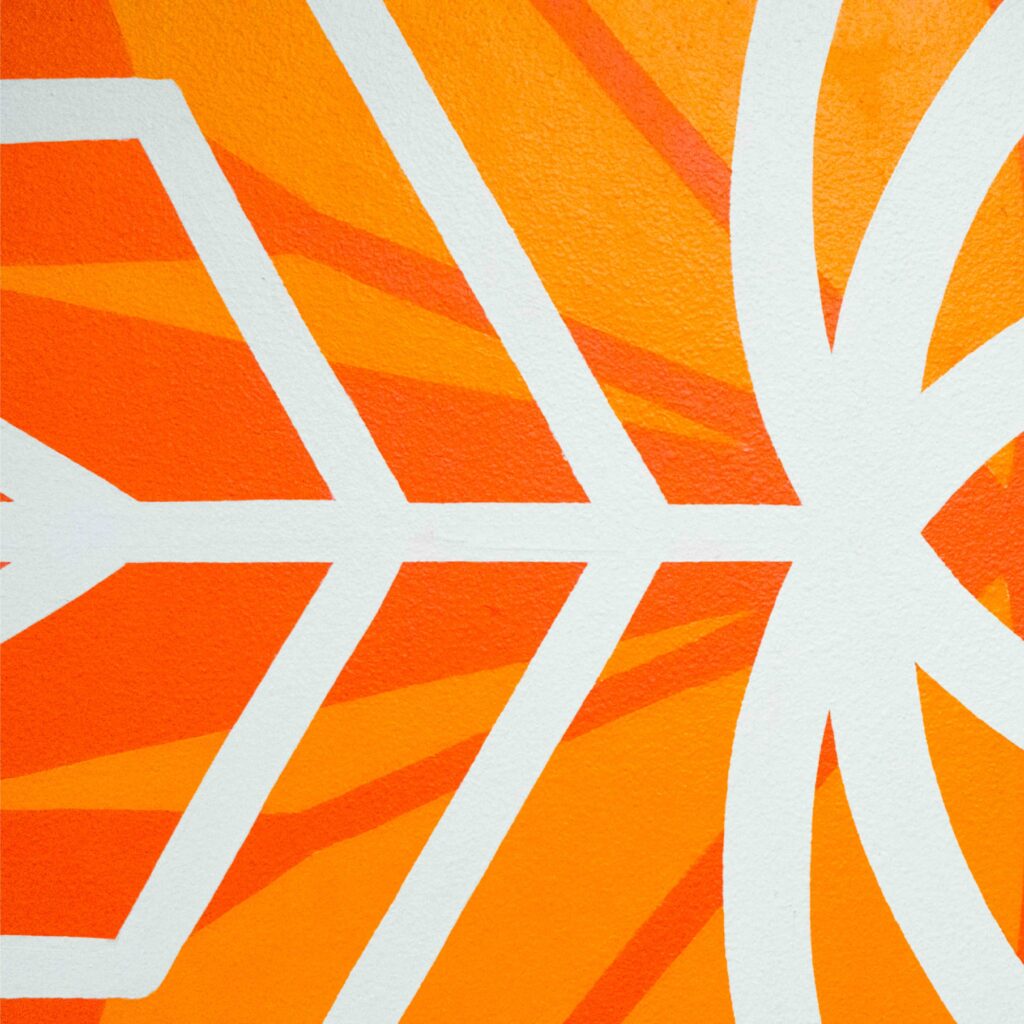

Interestingly, individuals that are more practiced in mindfulness and meditation, tend to experience flow state more often(1). Learning how to minimize distractions and stay present in the moment allows the mind and body to enter that flow state more readily. Flow is not unlike an active, moving meditation. Therefore, optimizing flow time allows an artist to experience their creative practice as a form of meditation. Painting, in particular, has been described as relaxing, or “zen” for artists. The peaceful, gentle stroke of a brush or the stretching, repetitive spray with an aerosol can is likened to a series of asanas in yoga. The physicality of the process keeps the body in line with the mind. The flow state evidences the importance of the mind-body connection when it comes to overall wellness.
Extrapolating the idea of mindfulness as a means to individual wellness, it’s thought-provoking to explore the concept of community wellness, specifically as it relates to public art. Flow state focuses on the individual artist’s experience of creating but what about the community’s experience of the art in a public space? Can the art itself lead to increased levels of wellness on a broader scale? Initial studies indicate there’s a connection between wellness and public art.
Read more here to explore this idea further.


